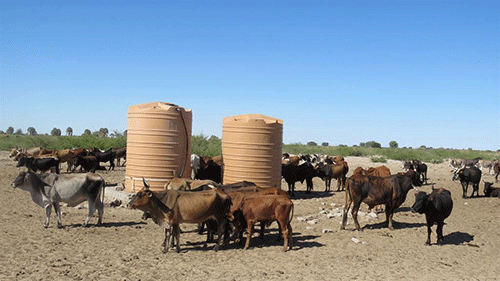At least 22 967 cattle were marketed in July 2022, which translates into an 8% decrease from 25 090 marketed in the prior year.
The number of cattle marketed for slaughtering purposes, declined by 33% to 7 374 in July 2022, compared to 11 072 in the prior year.
These figures are contained in Agribank’s latest Market Watch report, which stressed that weaner exports continue to dominate figures, increasing by 14% to 15 272 from 13 448 in the prior year.
According to the report, this can be attributed to higher weaner demand and prices in South Africa.
Cattle inventory across the globe remains below pre-Covid-19 levels, while demand for livestock products (wool and beef) has increased.
South Africa is no exception, thus the prices for livestock have increased, prompting more weaner exports from Namibia, Agribank noted.
The outlook
The outlook of cattle farmers remains a mixed bag.
On one hand, cattle prices in 2022 are higher, compared to 2021.
On the other hand, input expenses are rising.
With farmers facing increases in both feed and non-feed input costs, it remains questionable as to whether cattle price increases are enough to offset high production costs.
Although there are increases in beef exports to existing markets, the new markets are opening up, resulting in a 100% increase in beef export to 6 623.651 kilogrammes.
Small stock industry
The sheep industry continues to pose as a saving resort for the livestock industry, with 100% noted in total sheep marketed.
The sub-sector recorded 53 014 exports in July 2022 from 26 477 in July 2021.
Farmers have been herd building, following the prolonged drought, Agribank noted.
Live sheep exports to South Africa stood at 42 273 sheep in July 2022 from 26 273 last year.
Local sheep slaughtering also recorded a 10% increase to 10 197 in July 2022 from 9 284 in July 2021.
“We expect an increase in sheep slaughter numbers as the Farmers Meat Market abattoir in Mariental reopens in September 2022.
Double-digit growth in goat marketing was observed, recording a 103% increase to 15 628 in July 2022 from 7 700 in July 2021.
The sector performance is attributed to high numbers of live exports to South Africa for a better price.
Livestock farming comprises approximately two-thirds of agricultural production, with crop farming and forestry making up the remaining third of production.
According to the Namibia Statistics Agency, livestock’s contribution to the nominal GDP rose to 3.5% in 2020, compared to 3% in 2019.
Meat processing (which the Namibian government accounts for under manufacturing) contributes to another 0.2-0.4% of GDP.
The export of live animals (mostly cattle and sheep) has historically contributed to about two-thirds of agricultural exports by value.
In 2019, Namibia exported about 12 400 metric tons of meat.
Most meat is exported to the United States, Europe, South Africa and China.
Namibia is also the second African country, after South Africa, to meet the stringent United States (US) import conditions for beef.
Livestock farming remains an important foreign exchange earner for Namibia.


